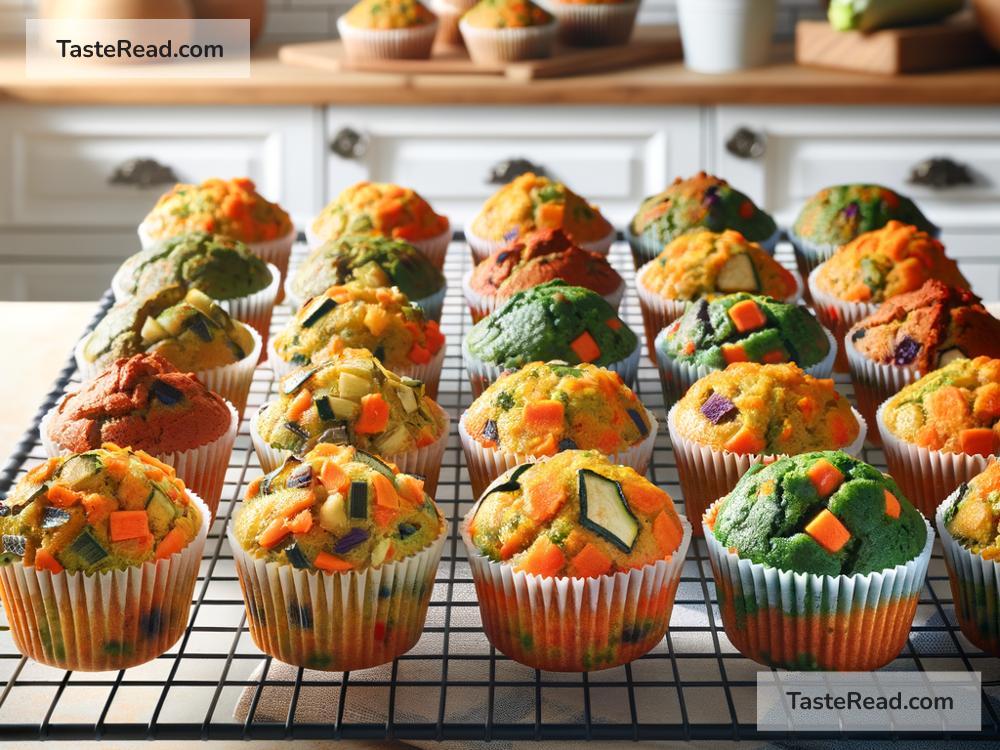Zero-Waste Muffins: Deliciously Saving the Planet with Leftover Vegetables
In a world where food waste is a concerning issue, finding innovative ways to reduce this waste has become more important than ever. Did you know that a lot of the food we throw away can actually be turned into something delicious and nutritious? One fantastic example of this is making zero-waste muffins using leftover vegetables. Yes, you heard that right – vegetables in muffins! Not only does this help in cutting down on waste, but it also adds a healthy twist to our favorite snack. Let’s dive into how you can make these delightful treats at home.
Why Zero-Waste?
Before we get baking, let’s touch on why zero-waste cooking is so crucial. Each year, a staggering amount of food is thrown away, much of which is perfectly edible. This not only is a waste of resources but also contributes to greenhouse gas emissions as decomposing food in landfills releases methane, a potent greenhouse gas. By turning our leftovers into new meals, we help reduce this waste, making our kitchens more sustainable.
The Versatility of Vegetables
Vegetables are the heroes in the zero-waste muffin story. Got some spinach that’s about to wilt? Or a few carrots left in the fridge? These and almost any other vegetable can be the star ingredient in your muffin recipe. Vegetables not only bring moisture and natural sweetness to the muffins but also pack them with fiber, vitamins, and minerals, making your treats a healthy option for breakfast or snacks.
Getting Started with Zero-Waste Muffins
The basic idea is simple: you create a versatile muffin batter and then fold in your leftover vegetables. You can use both raw and cooked vegetables for this purpose, making it a great way to utilize almost anything you have on hand. Here’s a simple guide to making your zero-waste muffins:
Ingredients:
- 1 ½ cups of all-purpose flour (whole wheat or gluten-free options work too!)
- ½ cup of sugar (you can adjust this based on your preferred sweetness)
- 2 teaspoons of baking powder
- ½ teaspoon of baking soda
- A pinch of salt
- ½ teaspoon of cinnamon or any spice you like (optional)
- 2 large eggs
- ¾ cup of milk (dairy or plant-based)
- ⅓ cup of oil (vegetable or coconut)
- 1 teaspoon of vanilla extract
- 1 to 1 ½ cups of finely chopped or grated leftover vegetables (carrots, zucchini, spinach, etc.)
Instructions:
-
Preheat the Oven and Prepare the Pan: Start by preheating your oven to 375°F (190°C). Line a muffin tin with paper liners or lightly grease it.
-
Mix the Dry Ingredients: In a large bowl, whisk together the flour, sugar, baking powder, baking soda, salt, and cinnamon (if using).
-
Whisk the Wet Ingredients: In another bowl, beat the eggs, then add the milk, oil, and vanilla extract. Mix these until well combined.
-
Combine Wet and Dry: Pour the wet ingredients into the dry ingredients bowl. Stir everything just until combined; it’s okay if the batter is a bit lumpy.
-
Fold in the Vegetables: Add your chosen leftover vegetables to the batter and gently fold them in until they’re evenly distributed.
-
Fill the Muffin Tin: Spoon the batter into the prepared muffin tin, filling each cup about two-thirds full.
-
Bake: Place the muffin tin in the oven and bake for 20-25 minutes or until a toothpick inserted into the center comes out clean.
-
Cool and Enjoy: Once baked, let the muffins cool in the pan for a couple of minutes, then transfer them to a wire rack to cool completely.
The Joy of Experimenting
The beauty of zero-waste muffins is that there are endless possibilities. You can experiment with different combinations of vegetables, add nuts or seeds for extra crunch, or even throw in some fruit for added sweetness. Every batch can be a delightful surprise!
When Baking Becomes an Act of Kindness
By choosing to make zero-waste muffins with leftover vegetables, not only are you treating yourself to a delicious and nutritious snack, but you’re also performing an act of kindness towards our planet. This small step in your kitchen contributes to a larger movement towards sustainability and mindful consumption. So, the next time you find some lonely veggies in your fridge, remember that they could be the beginning of your next baking adventure. Happy baking!


